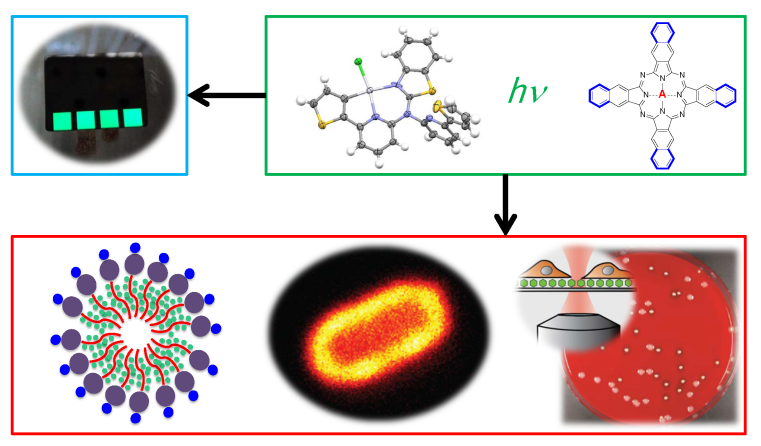Photofunctional (nano)materials for optoelectronics and theranostics
Besides applications in optoelectronics, e.g. in efficient lighting and display technologies on flexible substrates, transition metal complexes and organic dyes with long-lived triplet states can be employed for the light-driven generation of reactive oxygen species (ROS). The phototriggered production of ROS can be used for targeted therapy, e.g. for the inactivation of neoplastic cells and bacteria. The therapeutic effect should be combined with imaging capabilities by labelling the affected areas. Ideally, a single molecular species (or nanoparticle) should be able to produce ROS, to show a defined chemotherapeutic effect and to aid the diagnosis by selectively recognizing their biological target.
Prof. C. A. Strassert and his group develop new photofunctional dyes, coordination compounds, nanomaterials and coatings for optoelectronics, photocatalysis and theranostics. In particular, nanostructured multifunctional systems are developed, which can be used in organic light-emitting diodes1 but also for the optical labelling and light-driven inactivation of tumors or antibiotic-resistant bacteria.2 The new materials are investigated regarding their photophysical properties and optoelectronic performance. Their photobiological properties as well as their use in functional microscopy and multimodal bioimaging are explored in close collaboration with the UKM, the EIMI and in the frame of the Cells in Motion Interfaculty Center.3


